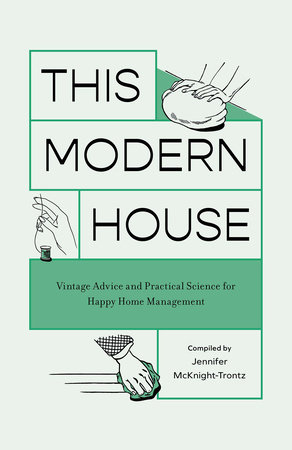IntroductionIf you came of age after the 1980s, you likely did not have home economics class in school. By then, the subject had lost public support, as well as educational funding; educators and policymakers wanted to emphasize marketable job skills, and home economics—keeping a family fed, clothed, housed, healthy, and happy on a budget—was largely unpaid and unappreciated work (mostly because of the assumption that it naturally fell to women). But people didn’t stop having to manage households just because they weren’t learning how to anymore. And maybe if we had all been given home economics training—which was not just sewing and cooking but also design, agriculture, and even some aspects of nursing—we would have an easier time with these necessary tasks.
The purpose of home economics class was not simply to pass on these skills, but to improve upon the tasks of homemaking: to make cleaning less backbreaking and more efficient, child-rearing less confusing, and dinners more nutritious and economical. Prior to indoor plumbing, modern appliances, and effective birth control, homemaking was grueling work.
It’s not surprising that from the beginning, home ec courses and texts were aimed almost entirely at women, largely because that’s who we collectively decided was to do this work. But decades before secondwave feminism, some of these educators did recognize that a well-run home was indeed a team effort. The Boy and His Daily Living, published in 1935, included chapters on clothing, nutrition, budgeting, and maintaining the home.
In the early 1900s, home economics was even promoted as a way to “counter the breakdown in society,” an enduring complaint through various times and perceived causes. There could be no better case for home management as a universal pursuit, not restricted to a particular gender or a particular era. Don’t we all want the home to be a sanctuary from what has always been, to some degree, a threatening outside world?
These days, we have more time-saving devices than ever, but even less time. Fortunately, it’s not too late to learn the principles of home management. This Modern House collects real lessons from texts as varied as 1919’s Getting the Greatest Food Value out of Your Garden, the 1938 government pamphlet Infant Care, and 1951’s Homemaking for Teenagers, highlighting material that is as relevant today as it was in times long past. The tips are directly from early- and mid-twentieth-century textbooks, though there have been some minor edits; in particular I have made adjustments to the canning section, as methods have indeed changed since the 1930s. I have also altered texts that assume homemakers are women, as today that role is held by whoever is at home.
Overall, these vintage texts offer more substance than style—precisely why most are still relevant. The lessons waste no time, make no pretenses, and don’t call for hard-to-find ingredients. The pioneers of home economics were not brands or celebrities—they were educators, scientists, and social workers trying to help homemakers and families flourish. This book is not necessarily a call for a return to the past, but a reminder that the fundamental goals and desires of home life have not changed.
Copyright © 2022 by Jennifer McKnight-Trontz. All rights reserved. No part of this excerpt may be reproduced or reprinted without permission in writing from the publisher.










